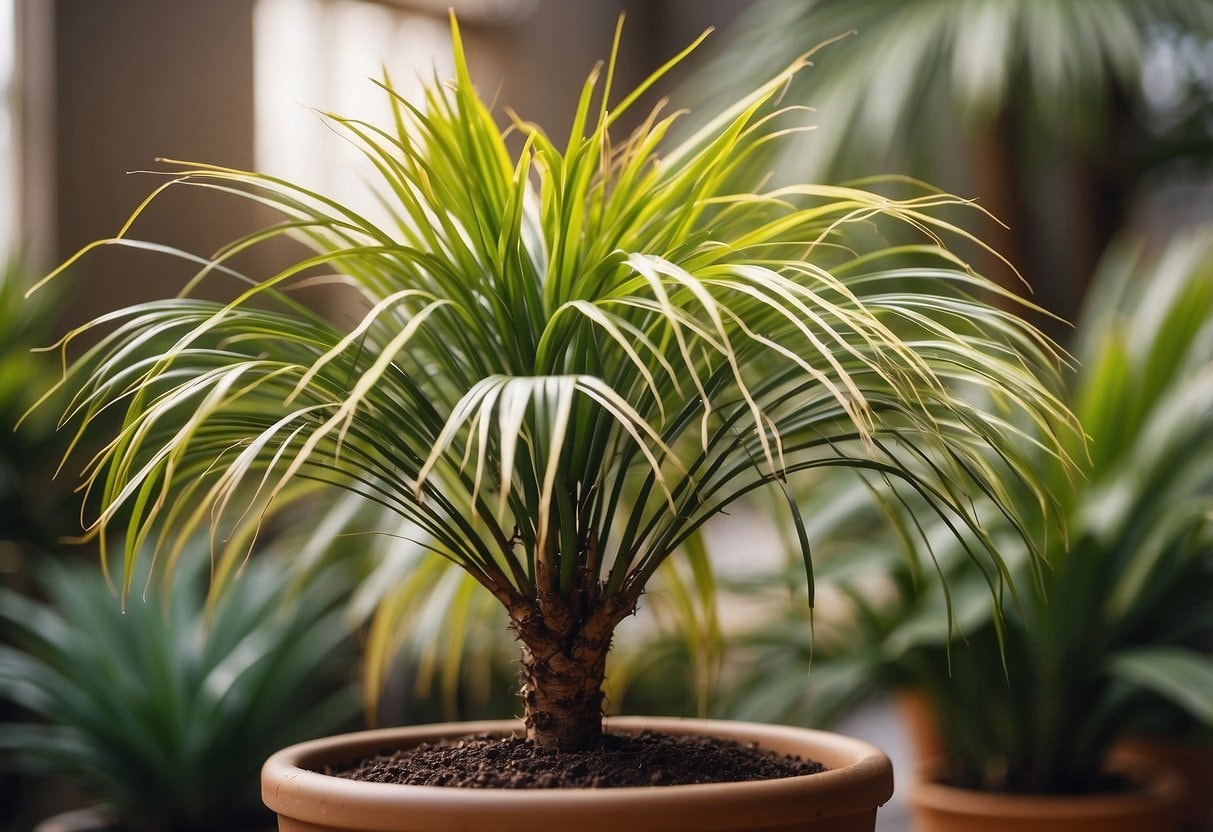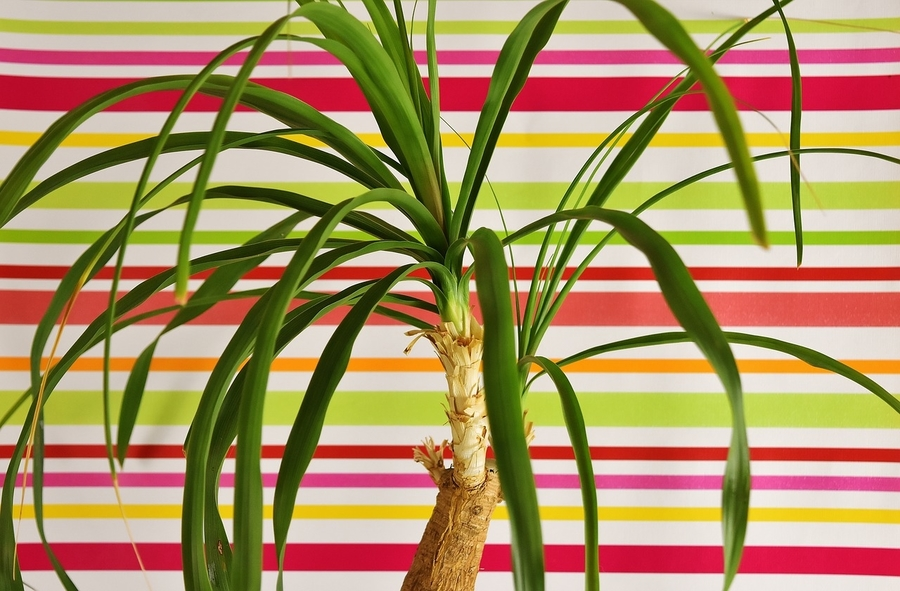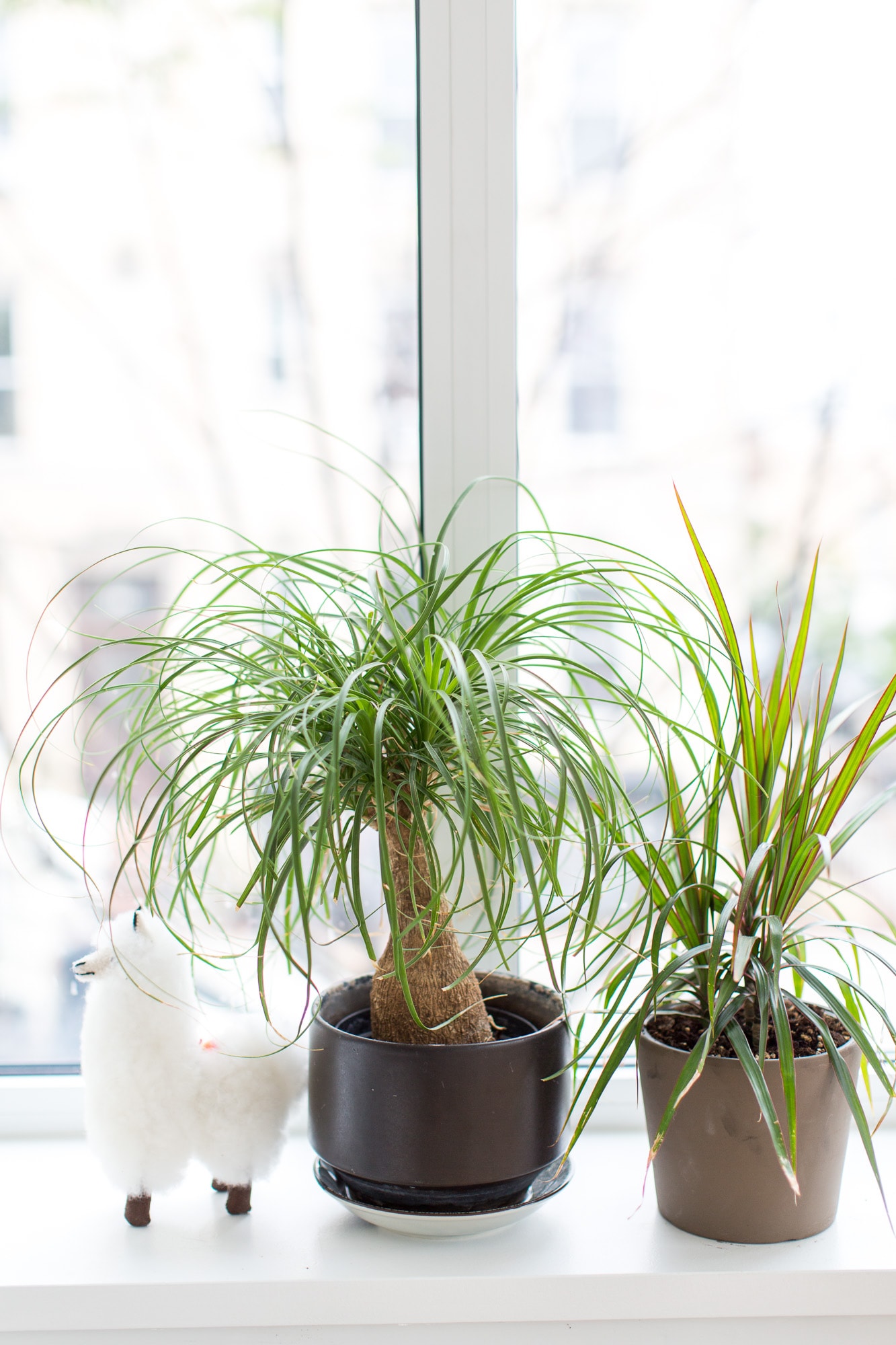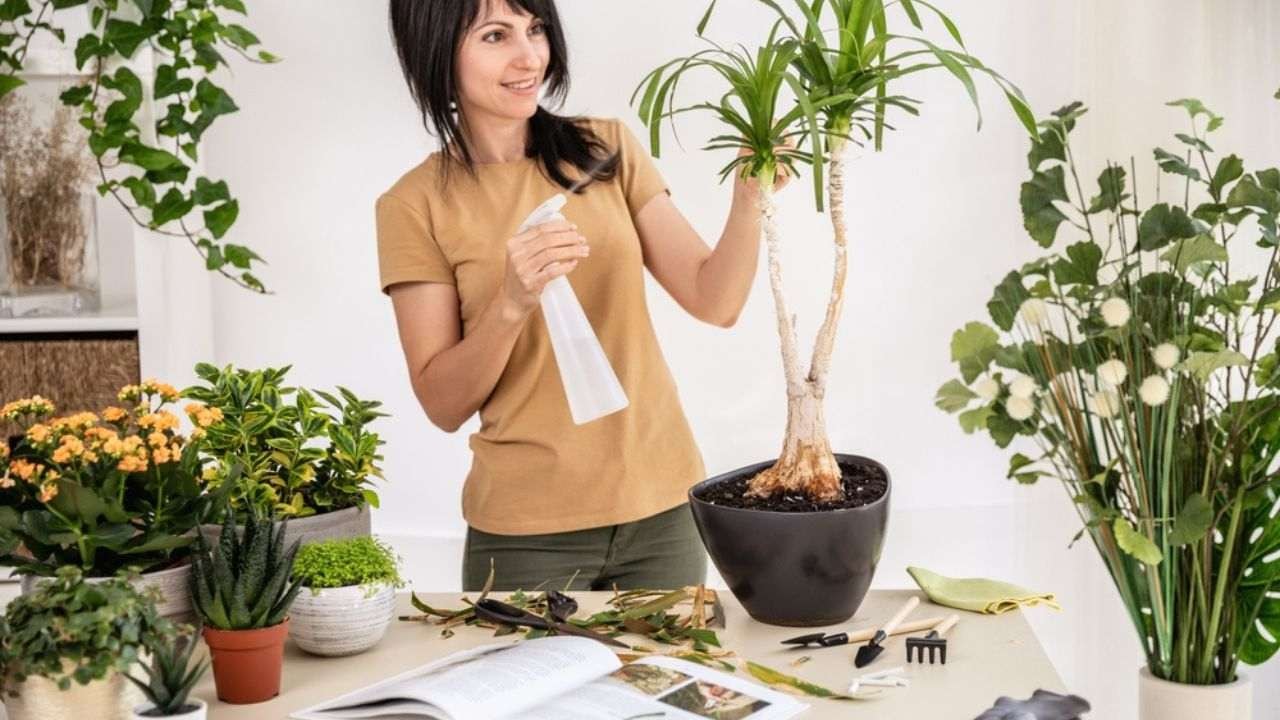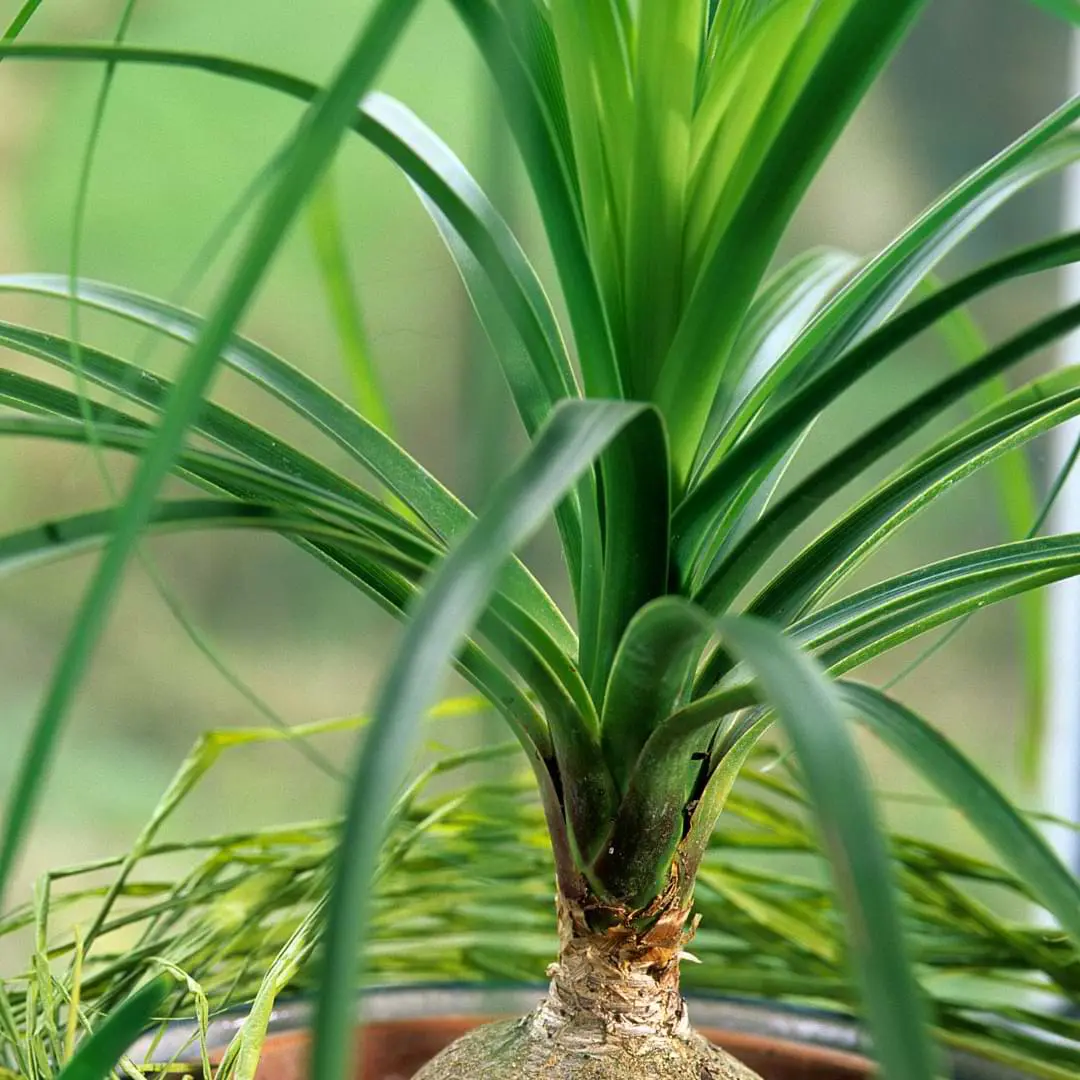HousePlantJoy is supported by our audience. When you purchase through one of our links, we may earn a small affiliate commission. As an Amazon Associate I earn from qualifying purchases. Your cost is not affected.
==================
Want to know what Ponytail Palm’s problems and solutions are? Picture this: a lush, vibrant Ponytail Palm gracing your living space with its whimsical, cascading leaves. It’s the epitome of low-maintenance beauty—until it’s not. You’re not alone if your Ponytail Palm is drooping, yellowing, or simply not looking its best. Despite their reputation for resilience, these quirky plants can face various issues that leave even seasoned plant lovers scratching their heads.
But fear not! In this guide to Ponytail Palm problems and solutions, we’ll unravel the common issues plaguing Ponytail Palms and provide straightforward strategies to restore your plant to its former glory. Whether you’re a green-thumbed guru or a newbie, you’ll find practical tips to bring your Ponytail Palm back to its vibrant, carefree self.
Ponytail Palm Problems and Solutions: Quick Fixes for Common Issues
Ponytail palms are stunning plants that can brighten up any room. But even these tough plants can face issues. Common ponytail palm problems include yellow or brown leaves, wilting, and curling leaves. These signs often point to watering troubles or other care mistakes.
Don’t worry if your ponytail palm looks unhappy. Most problems have simple fixes. With the right care, you can nurse your plant back to health. Proper watering, the right pot size, and light are key to keeping your ponytail palm happy.
Let’s explore some common ponytail palm issues and how to solve them. You’ll learn how to spot problems early and keep your plant thriving. With these tips, you’ll be well on your way to growing a lush, healthy ponytail palm.
Key Takeaways
- Proper watering is essential to address and prevent common issues such as brown leaf tips and root rot. Ensure the soil dries out between waterings and use well-draining soil to maintain plant health.
- Ponytail palms thrive in bright, indirect light and stable temperatures. Insufficient light and extreme temperature fluctuations can lead to slow growth and leaf discoloration.
- Frequent checks of your plant’s condition, including leaves, soil, and trunk, can help catch issues like pests and nutrient deficiencies early, allowing for timely intervention.
- Address pest infestations promptly using treatments like neem oil or insecticidal soap. Regular cleaning and preventive measures can help keep pests at bay.
Characteristics of Ponytail Palm
Ponytail palms have a thick, swollen base that tapers into a thinner trunk. This bulbous bottom stores water, helping the plant survive drought. The trunk is topped with long, thin leaves that cascade down like a ponytail. Despite its name, the ponytail palm is not a true palm.
It’s part of the Asparagaceae family. The plant’s scientific name is Beaucarnea recurvata. Ponytail palms are drought-tolerant and low-maintenance. They prefer bright, indirect light but can adapt to various light conditions. These plants don’t need frequent watering, making them ideal for forgetful gardeners.
Growth Habits and Lifespan
Ponytail palms grow slowly, adding only a few inches each year. In ideal conditions, they can reach heights of 12-20 feet outdoors. Indoor plants typically stay much smaller, around 3-6 feet tall. These plants have impressive lifespans. A ponytail palm can live for decades or even centuries with proper care. Some specimens in the wild are believed to be over 350 years old.
Ponytail palms rarely branch naturally. New growth usually emerges from the top of the trunk. You can encourage branching by cutting off the top of the plant, but this should be done carefully to avoid damaging the plant.
Common Problems of Ponytail Palm
Ponytail palms face several issues affecting their health and appearance, making understanding Ponytail Palm Problems and Solutions crucial. These problems range from leaf discoloration to pest infestations. Knowing how to spot and address these issues is key to thriving your Ponytail Palm.
Brown Leaf Tips
Brown leaf tips often signal a watering problem in ponytail palms. This issue can stem from both under and overwatering. When you underwater, the plant doesn’t get enough moisture, causing the tips to dry out and turn brown. Overwatering leads to root problems, which also result in brown tips. To fix this:
- Check your watering routine.
- Let the soil dry out between waterings.
- Use a pot with drainage holes to prevent water from sitting in the soil.
Hard water or too much fluoride can also cause brown tips. If you suspect this is the case, try using filtered water for your plant. Trim off the brown tips with clean scissors to improve the plant’s appearance.
Leaf Discoloration
Leaf discoloration in ponytail palms can take various forms. Yellow leaves often point to overwatering or poor drainage. If you notice this, check the soil moisture and adjust your watering schedule. Pale or light green leaves indicate a lack of nutrients. Feed your plant with a balanced, water-soluble fertilizer during the growing season. Don’t overfeed, as this can lead to more problems.
Brown spots on leaves can be a sign of sunburn. If your plant is in direct sunlight, move it to a spot with bright, indirect light. Curling leaves might mean the plant needs more humidity. Try misting the leaves or using a pebble tray to increase moisture around the plant.
Slow Growth or Stunted Size
Slow growth in ponytail palms can be frustrating. One common cause is insufficient light. These plants need bright, indirect light to thrive. Move your plant closer to a window if it is in a dark spot.
Pot size can also affect growth. A pot that’s too small can stunt the plant’s growth. On the other hand, a pot that’s too large can lead to overwatering issues. Choose a pot that’s slightly larger than the plant’s root ball.
Temperature plays a role, too. Ponytail palms prefer warm temperatures between 60-80°F (15-27°C). If your plant is in a cold draft or near an air conditioner, it might grow slowly. Move it to a warmer spot for better growth.
Rotting Stems or Roots
Rotting stems or roots are serious problems for ponytail palms. The main cause is usually overwatering. When soil stays too wet, it creates perfect conditions for fungal growth. This leads to root rot, which can spread to the stem.
Signs of rot include a soft, mushy stem base or a foul smell from the soil. If you suspect root rot, act fast. Remove the plant from its pot and check the roots. Healthy roots are firm and white or light-colored.
Cut away any soft, brown, or black roots. Repot the plant in fresh, well-draining soil. Reduce watering and make sure the pot has good drainage. In severe cases, you might need to propagate the healthy parts of the plant to save it.
Pests on Ponytail Palm
Pests can be a nuisance for ponytail palms. Common invaders include mealybugs, scale insects, and spider mites. These pests suck sap from the plant, weakening it over time. Mealybugs appear as small, white, cottony clusters on leaves and stems. Scale insects look like small bumps on the plant. Spider mites are tiny and often go unnoticed until you see fine webbing on the plant. To get rid of pests:
- Start by isolating the affected plant.
- Wipe the leaves with a damp cloth to remove visible pests.
- For stubborn infestations, use insecticidal soap or neem oil.
- Apply these treatments weekly until the pests are gone.
- Prevent future pest problems by keeping your plant healthy and inspecting it regularly.
Optimal Growing Conditions
Ponytail Palm problems and solutions often come down to understanding that Ponytail palms thrive in specific conditions. Meeting their soil, water, light, and temperature needs can help your plant flourish and avoid common issues related to Ponytail Palm problems and solutions.
Soil Requirements
For your ponytail palm, go for well-draining soil. A mix of sand, perlite, and potting soil is perfect. Stay away from heavy soils that hold onto too much moisture. Also, make sure your pot has drainage holes to keep excess water from pooling at the bottom.
Choosing the right pot size is important, too. If it’s too big, the soil can stay wet for too long. If it’s too small, the roots might get cramped. Opt for a pot that’s just a bit larger than the plant’s base—this lets it grow without leaving too much extra soil. And remember, repotting every 2-3 years will keep your plant happy and healthy.
Watering Schedule
Ponytail palms are drought-tolerant. They store water in their bulbous trunks. Water sparingly to avoid issues. Let the soil dry out completely between waterings. In spring and summer, water every 2-3 weeks. In fall and winter, reduce to once a month.
Overwatering can cause root rot. Signs include yellowing leaves and wilting. Underwatering leads to brown, crispy leaf tips. Water deeply when you do water. Ensure water drains from the pot’s bottom holes. Empty any water that collects in the saucer.
Sunlight and Temperature Needs
Ponytail palms love bright light. Place them near a south-facing window for best results. They can tolerate some direct sun but avoid harsh afternoon rays. If leaves turn pale, your plant might need more light. Move it closer to a window or add artificial lighting.
The ideal temperature range is 60-75°F (15-24°C). They can handle brief periods down to 50°F (10°C). Avoid exposing them to temperatures below 40°F (4°C) for long. In winter, keep plants away from cold drafts. Move them back from the windows if needed. Maintain steady temperatures for best growth.
Adjusting Watering Practices
Watering is critical for ponytail palms. These plants are drought-tolerant but still need proper hydration. If you see curling leaves, you might be underwatering. Check the soil moisture before watering. Stick your finger about 2 inches deep into the soil. If it’s dry, it’s time to water. For overwatering:
- Let the soil dry out completely between waterings.
- Use well-draining soil and pots with drainage holes.
- In winter, reduce watering frequency.
Fixing Lighting and Temperature Issues
Ponytail palms need bright, indirect light. Too little light can cause slow growth and pale leaves. Move your plant closer to a window if it’s not getting enough light. A south-facing window is ideal. Protect your plant from direct afternoon sun, which can scorch the leaves. Use sheer curtains to filter strong light. Keep temperatures between 60-80°F (15-27°C). Avoid placing your plant near drafty windows or air vents.
Managing Pests
Common pests for ponytail palms include mealybugs and spider mites. Check your plant regularly for signs of infestation. For mealybugs, wipe them off with a cotton swab dipped in rubbing alcohol. Repeat this process every few days until they’re gone.
You can treat spider mites with neem oil. Mix two teaspoons of neem oil with 1 quart of water, then spray the solution on all parts of the plant. Consider using insecticidal soap for severe infestations and follow the package instructions carefully.
Addressing Nutritional Deficiencies
Ponytail palms are pretty low-maintenance when it comes to fertilizer, but a little feeding can really boost their growth. Just use a balanced, water-soluble fertilizer and dilute it to half strength. Apply it once a month during the growing season—spring and summer are perfect times.
If you notice your palm’s leaves turning yellow, it might be lacking nitrogen. In that case, switch to a fertilizer with higher nitrogen content. Also, if your plant is root-bound, it could be struggling with nutrients. Repotting every 2-3 years helps give it more room and fresh soil. And remember, you can skip the fertilizer in the fall and winter when the plant’s growth slows down.
Preventive Measures and Maintenance
Taking care of your Ponytail Palm is key to avoiding common problems and ensuring its health. You can keep your plant thriving and vibrant by addressing Ponytail Palm Problems and Solutions through regular checks, pest prevention, and adapting care to the seasons.
Regular Monitoring
Check your ponytail palm often for signs of trouble. Look at the leaves, trunk, and soil weekly. Watch for yellow or brown leaves, which can cause watering issues or pests. Then, feel the soil before watering. It should be dry to the touch.
Inspect the trunk for soft spots or cracks, which might show rot or damage. Meanwhile, look under leaves for tiny pests or webs. Make notes about your plant’s growth and changes. This helps you spot problems early.
Proactive Pest Control
Keep pests away from your ponytail palm with simple steps. Clean leaves gently with a damp cloth to remove dust. This stops pests from settling. Use neem oil spray every few weeks as a safe pest deterrent. Mix one teaspoon of neem oil with 1 quart of water, then spray lightly on leaves and stems.
Keep your palm away from other plants at first. This stops pests from spreading if present. Check new plants closely before placing them near your ponytail palm. Remove any dead leaves promptly, as pests often hide in plant debris.
Seasonal Care Tips
Change your ponytail palm care with the seasons. In spring and summer, water is more often as the plant grows. Let the soil dry between waterings. Feed your plant with a balanced liquid fertilizer every 4-6 weeks during growth seasons. Stop feeding in fall and winter when growth slows.
Move your palm away from cold windows in winter and keep it out of drafts. Reduce watering in cooler months to prevent root rot. In hot summers, mist leaves to boost humidity. Just make sure not to let water sit in the crown. Trim any brown leaf tips with clean scissors.
Did You Know?
Proper pruning and grooming keep your ponytail palm healthy and attractive. To prune your ponytail palm, start by removing dead or yellowed leaves. Use sharp scissors or pruning shears to make clean cuts close to the trunk. Regular grooming keeps your ponytail palm looking its best. Wipe dust from leaves with a damp cloth to help the plant photosynthesize efficiently.
When to Repot
Ponytail palms grow slowly and don’t need frequent repotting. Look for signs it’s time to report:
- Roots poking out drainage holes
- Plants are becoming top-heavy and tipping over.
- Soil dries out very quickly after watering.
- Visible salt buildup on the soil surface
For young Ponytail Palms, it’s a good idea to repot them every 2-3 years. Once they’re mature, you might only need to repot every 4-5 years. Spring or early summer is the perfect time for repotting, as it gives your plant a whole growing season to settle into its new pot and bounce back.
Repotting Steps
Follow these steps to report your ponytail palm safely:
- Water the plant a day before repotting to reduce stress.
- Gently remove the plant from its current pot.
- Inspect the roots and trim any that are dead or rotted.
- Place fresh potting mix in the new container.
- Position the plant in the new pot at the same depth as before.
- Fill around the roots with potting mix, pressing gently to remove air pockets.
- Water thoroughly and place in a bright, indirect light location.
Dividing the Bulb
To divide a ponytail palm:
- Start by removing the plant from its pot.
- Look for offshoots, called pups, growing from the base. These should be about 4 inches tall.
- Use a sharp knife to remove the pups from the mother plant.
- Make sure each pup has some roots attached.
Let the cut areas dry for a day or two. This helps prevent rot when you replant. Plant each pup in a pot with well-draining cactus soil—water sparingly at first. Place the pots in a warm spot with bright, indirect light. New growth should appear in a few weeks.
Seed Propagation
Start by getting fresh ponytail palm seeds. Fill small pots with a sandy, well-draining soil mix. Plant the seeds just below the soil surface. Keep the soil lightly moist but not soggy. Put the pots in a warm place, around 70-80°F. Bright, indirect light is best. Seeds usually sprout in 2-3 weeks. Once seedlings appear, reduce watering and let the soil dry between waterings. As the plants grow, move them to bigger pots. Be patient – ponytail palms grow slowly from seed.
Dealing with Fungal Infections
Fungal infections in ponytail palms are rare but can be damaging. Look for discolored or spotted leaves. If you see these signs, act quickly. Remove infected parts with clean, sharp tools. Then, airflow around the plant can be improved, and watering can be reduced. Also, avoid getting leaves wet.
Apply a fungicide made for palms and follow the product instructions carefully. Repeat treatments as needed. Keep the plant area clean and remove fallen leaves promptly to prevent future infections. Also, avoid overwatering, as excess moisture encourages fungi.
Coping with Extreme Temperature Fluctuations
Ponytail palms prefer stable temperatures. Sudden changes can stress the plant. Watch for leaf curling or discoloration after temperature shifts. Move the plant away from drafts, heating vents, and air conditioners. These can cause rapid temperature changes.
If outdoors, protect your palm during cold snaps. Use a cloth cover or bring it inside if possible. For heat waves, provide shade and extra water. Mist the leaves to cool the plant. Gradually acclimate your palm when moving it between indoor and outdoor spaces. This helps prevent shock from sudden temperature changes.
Keeping Your Ponytail Palm Thriving
Ponytail palms are renowned for their low-maintenance charm and unique beauty; they are not immune to issues affecting their health and appearance. Understanding the common Ponytail Palm problems and solutions is critical to maintaining a thriving plant. From yellowing leaves to root rot, most issues have straightforward remedies rooted in proper care and timely intervention.
By adjusting your watering practices, ensuring optimal light and temperature conditions, and addressing pests and nutritional deficiencies, you can overcome these challenges and keep your Ponytail palm vibrant and healthy. Regular monitoring and proactive care are essential to preventing and managing problems. With these strategies, you’ll be well-equipped to nurture your Ponytail Palm and enjoy its whimsical, cascading leaves for years.
How Can You Distinguish Between Dehydration and Crown Rot in a Ponytail Palm?
Is It Possible to Revive a Ponytail Palm That Appears to Be Dead, and What Are the Steps?
What Are the Implications of Brown Tips on a Ponytail Palm's Leaves, and Should They Be Trimmed?
Why Should You Join Us?
Get insider secrets: Unearth the best-kept tips to keep your plants thriving and blooming like never before.
Expert Advice: Gain access to our team on Facebook, Twitter, and other social media channels, and meet our gardening experts eager to help you on your plant journey.
Engage With Like-Minded Souls: Connect with fellow plant lovers, exchange stories, and build a supportive community. Join us today! Follow Houseplant Joy on Facebook, Instagram, and Twitter for daily inspiration and a blooming good time! #HouseplantJoy #GreenThumbsUnite #HouseplantLove


